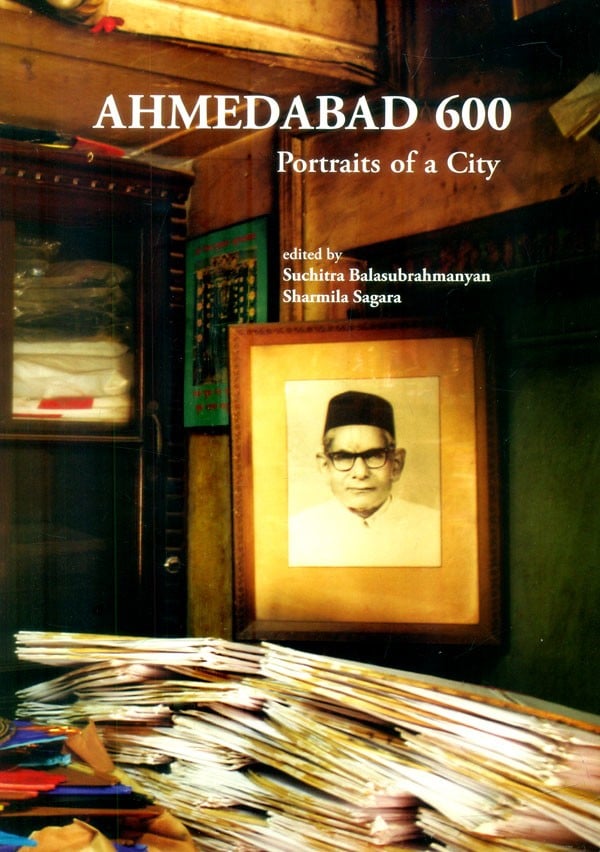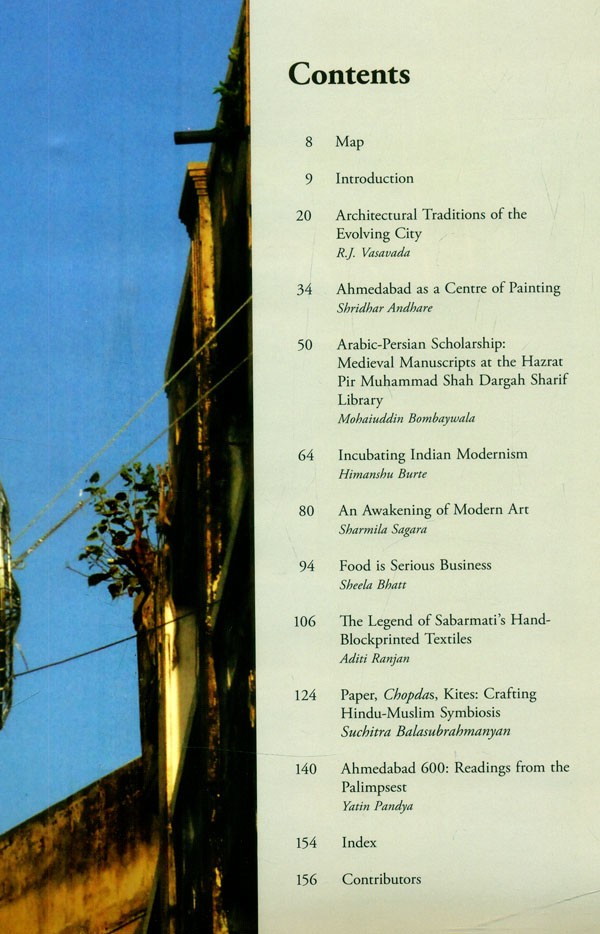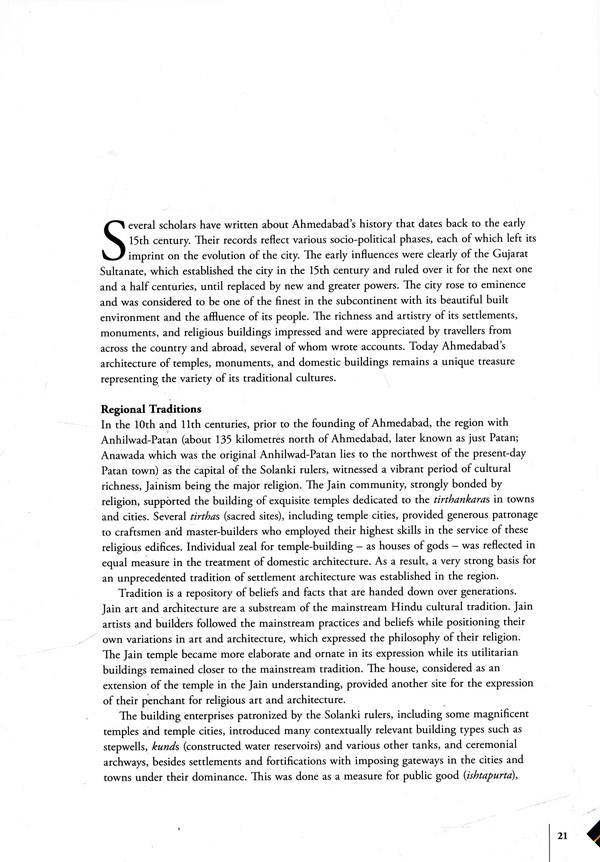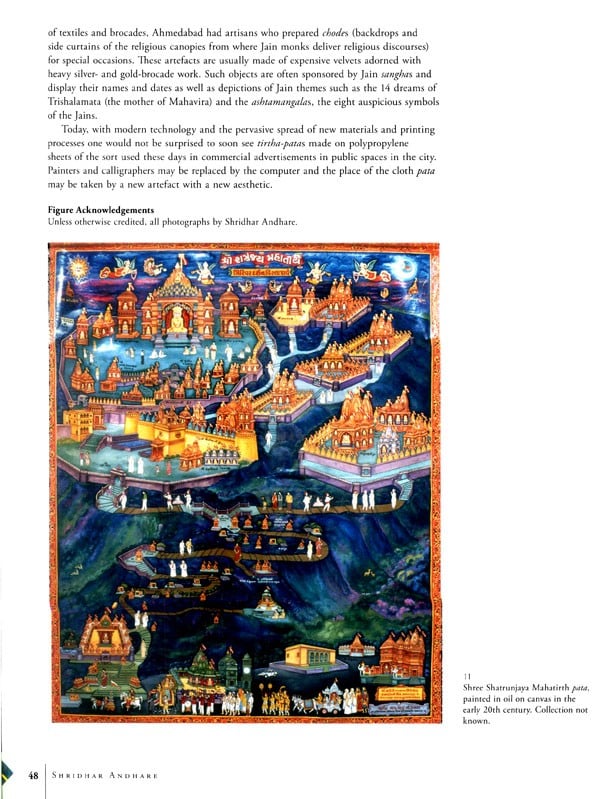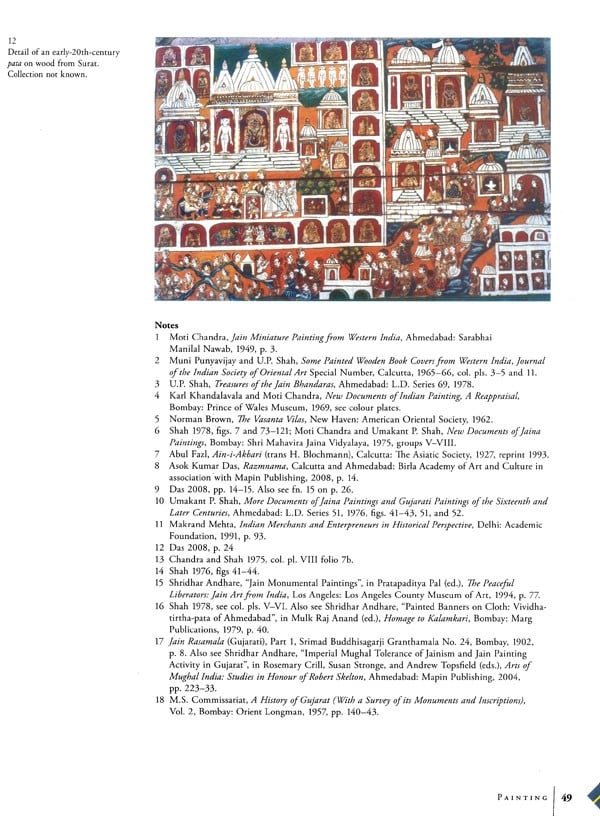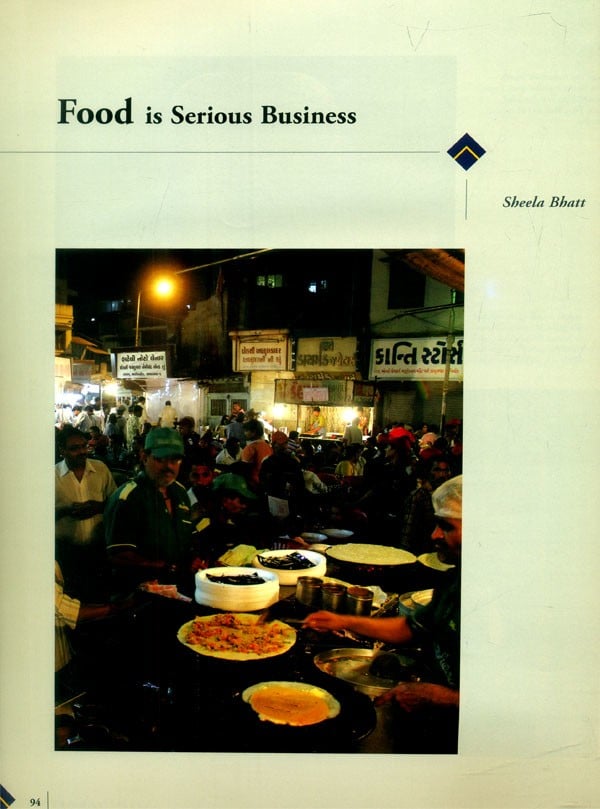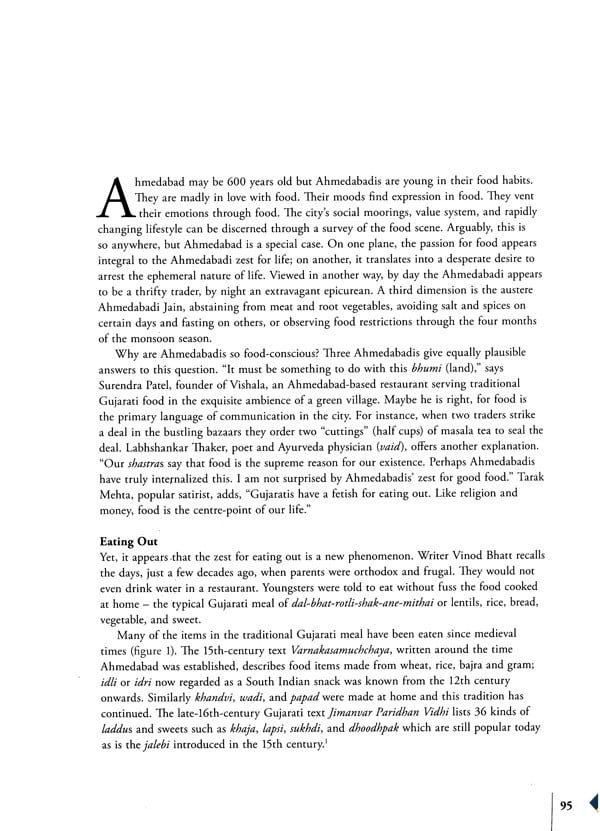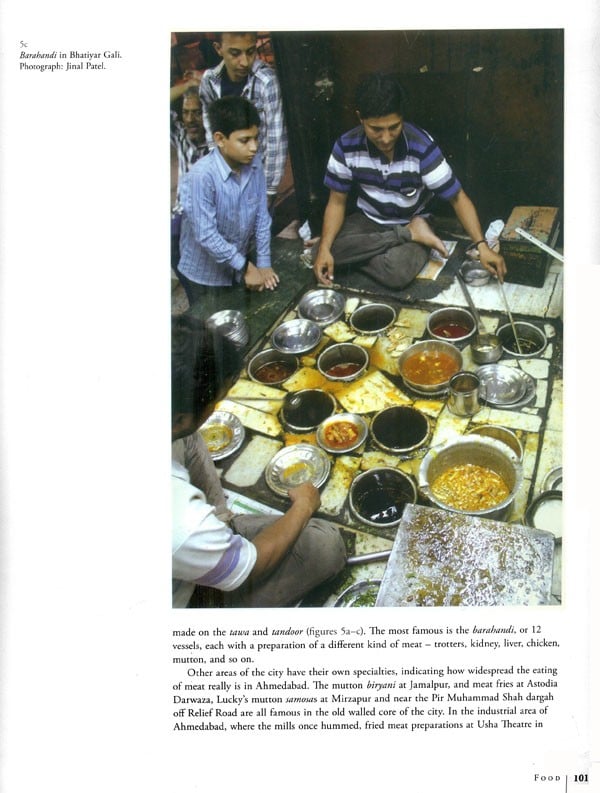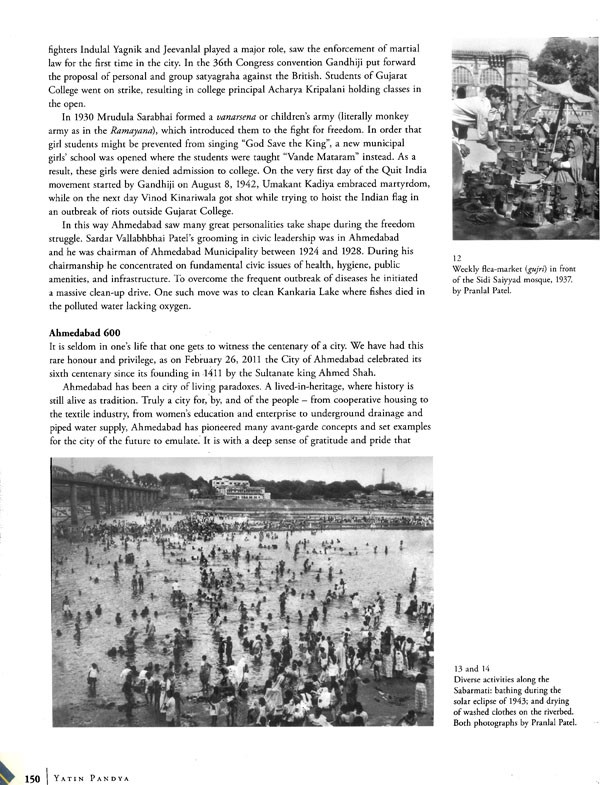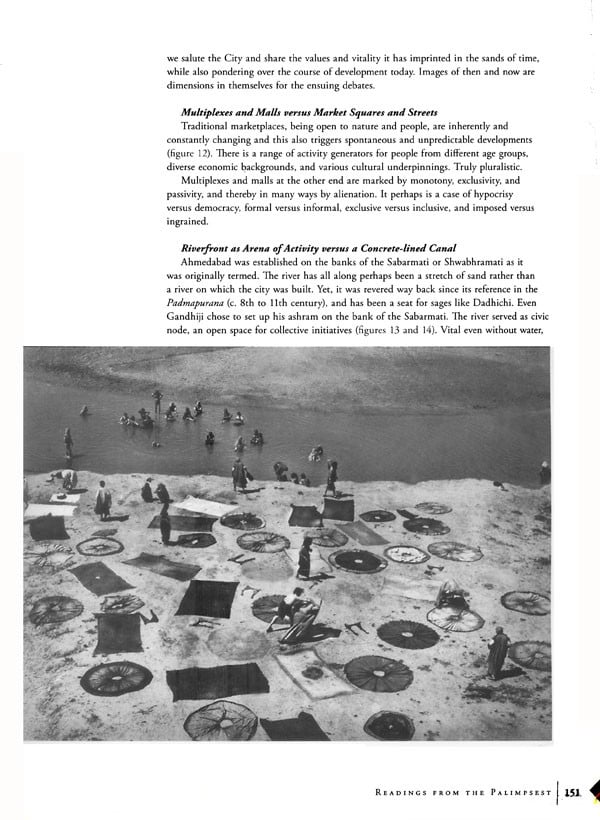
Ahmedabad 600- Potraits of a City
Book Specification
| Item Code: | UBE152 |
| Author: | Suchitra Balasubrahmanyan and Sharmila Sagara |
| Publisher: | Marg Publications |
| Language: | English |
| Edition: | 2011 |
| ISBN: | 9788192110608 |
| Pages: | 156 (Throughout Color and B/w Illustrations) |
| Cover: | HARDCOVER |
| Other Details | 13.00 X 9.50 inch |
| Weight | 1.19 kg |
Book Description
Spanning the traditional and the modern in architecture, arts, and crafts, this volume commemorates 600 years of the founding of Ahmadabad with eloquent portraits by scholars - many of whom have made this city their home.
The City's Birth and Growth The early years of the 15th century were the twilight years of the Delhi Sultanate when provincial leaders found the opportunity to break free of the waning power and authority of Delhi and established independent sultanates in different parts of the subcontinent. One such noble was Zafar Khan who established the independent Gujarat Sultanate in 1407, assuming the title Muzaffar Shah 1. It was during the reign of his grandson Ahmed Shah that the Gujarat Sultanate was consolidated and came into its own. The decisive moment was when Ahmed Shah laid the foundation of a new capital on the banks of the Sabarmati river in 1411, asserting and underlining his authority by ending the association with Patan which had been the capital of Gujarat since the 10th century.
The Sultanate period lasted about 200 years during which Ahmedabad became a prosperous trading and craft-manufacturing centre. Under successive sultans, particularly Mahmud Begada and Muzaffar Shah II. Ahmadabad’s architecture, art, crafts, and textiles flowered. The city exerted a centripetal force, drawing skill and scholarship from all over the subcontinent and the larger pan-Islamic community of West Asia. Simultaneously. the centrifugal force of Indian Ocean trade networks took Ahmadabad’s as far east as Malacca and west to Africa. In 1573, after a battle on the banks of the Sabarmati, Akbar took over Ahmedabad and annexed Gujarat to the Mughal empire. Gujarat was prized not only for its wealth and manufactures but also because its ports, particularly Cambay (Khambat) lying 70 kilometers south of Ahmedabad, were the gateways to Mecca. For European traders, Cambay was the gateway to India and it was in the Mughal period that Ahmedabad had its first encounter with Dutch and English traders who established factories in the city to deal in textiles, indigo, saltpeter, and paper. However, though Ahmedabad was visited by Europeans much before other major Indian cities, there was no substantive cultural impact.
**Contents and Sample Pages**
